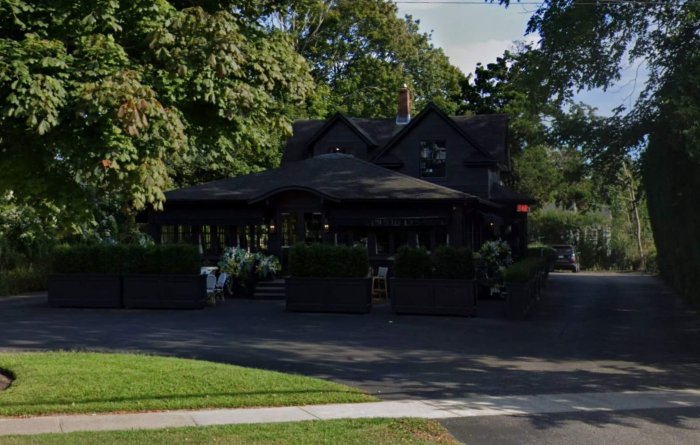Dr. Phyllis Harrington said at the Tuesday, March 1 Oyster Bay-East Norwich board of education meeting that she was pleased that 97 people watched the Budget Forum broadcast live from their Internet site obenschools.org on Tuesday, Feb. 15. She added that she would like the reverse – that even more came in person, as she welcomed a large audience in the OBHS library.
She said the goal of this second budget meeting was to follow up on the questions of the previous meetings. “We want you to be as informed as possible,” she said.
The meeting agenda also called for a decision on the use of the Capital Reserve funds – money saved for the use of building needs that requires voter approval to be used. Having the funds on hand means the district will not accrue interest because of borrowing. The money is in the account and must be used for capital improvements only.
Still, Ms. Harrington said, “It might be a year to save the funds in case Albany changes the rules on how the reserve funds can be used.” It was a good reason to keep some of those funds available, which is what happened after a presentation by Christopher Van Cott, OBEN assistant for business and grounds, and the board’s decision. Ms. Harrington commented that last year capital improvements were done in a favorable market and resulted in coming in under budget.
Five Capital Projects
Christopher Van Cott suggested five projects that need to be addressed in the five-year plan the state mandates. They include: the expansion of the Oyster Bay High School music room and art room. Both are crowded because of the population bubble of students now at the high school – they are the largest class the district has. The proposed cost of moving out the walls of the adjacent rooms is $1,650,000. There are photos on the website demonstrating the need, which includes storage space for the musical instruments.
There is a need to upgrade the third grade bathrooms at Vernon that are not ADA compliant – both boys and girls bathrooms, for a cost of $160,000. The fencing at the high school is damaged and not up to code with a replacement cost of $90,000. The OBHS marquee is damaged and needs replacing for a cost of $75,000. At the end of the public comment portion of the meeting, Trustee Robin Dando suggested they do those projects that involve the safety of the students. The board voted and decided to include a referendum on the ballot for the third grade bathrooms at Vernon and the fencing at the high school for a total of $250,000 out of a capital reserve fund with a current balance of $2,262,668. [All district funds receive interest from the banks they are deposited in.]
Budget Explanations
Superintendent Harrington re-capped her suggestions for cuts for the budget explaining how she intends to handle apportioning the workload. Her goal was to bring the increase down to a manageable figure. She said while she recommended the changes, she was not comfortable with them and was not promising that everything would remain the same in the school, but she said the changes would have the least amount of impact on the total school program and the least number of students.
Her suggestion was to replace the assistant principal with two teachers who would reduce their class load to cover for that position. As for eliminating five teachers at the elementary level, the classes would be larger but still in the high range of the school’s guidelines.
As for the position of social worker, the federal and local funds have dried up and they will still have two social workers, and she added the district has two staff members who speak Spanish.
As for eliminating a health teacher at Vernon, that material will be taught by their classroom teachers. Other cuts include one less clerk at Vernon; reducing seventh and eighth grade coaches; eliminating Vernon clubs; reducing high school clubs including the Middle School play.
She said she was not happy about the cuts but the reality of it was “We think the community can support a 3 percent budget increase.”
A problem the district faces is that it has the second highest wealth ratio in NYS which means the district gets little aid returned by Albany so the district depends on the local tax-payers for funding. She said they estimate they will receive $1.9 million in federal and state aid; and about $ 800,000 from other revenue.
The district is still looking at what the appropriated Fund Balance will be and needs the board to decide how much to use to reduce the Tax Levy, the amount needed to run the school for the 2011-2012 year.
Another decision for the board to make involves what the state is proposing with a tax cap. The district might need to keep funds to lower next year’s budget so it can keep to the proposed 2 percent increase. “Planning is a must,” said Dr. Harrington both for this year and to position themselves the best they can for next year. It is the subject of the next budget workshop. She encouraged people to call her office saying her goal was a better educated voter.
Tax Levy Choices
Mr. Van Cott made a presentation to explain how much of an increase would result under several variables: the amount of the increase decided upon; and the amount of Tax Levy reduction made using the Appropriated Funds.
Mr. Van Cott said the numbers were all estimates. There are multiple variances including that the district determines the tax levy; the county sets the assessed value; they subtract state aid and revenue from the tax levy; and the STAR program which was not discussed.
There are four classes of taxing: residential, apartments and condos; utilities; and commercial. The largest is 89 percent for residential homes. Other districts get funding from the commercial class, but this area doesn’t have a large commercial base – they pay 3.5 percent of the budget. Apartments and condos pay 3.5 percent and utilities pay 2.0 percent.
Mr. Van Cott decided to use the median figure for assessed valuation since, he said, “These are two different communities, Oyster Bay and East Norwich. There is no average home. The wealthy population drives the average up.” Therefore he is using the median figure (the middle figure in the list) which sets East Norwich at $555,000; and Oyster Bay at $528,000.
Mr. Van Cott estimated how much of an increase would be paid by residents of East Norwich and Oyster Bay if the district uses $500,000 to reduce the tax levy, or not.
With a 5.17 Percent Increase
If they reduce the tax levy, East Norwich residents will pay $5 more and Oyster Bay will pay $18 more. If the district doesn’t appropriate funds to lower the tax levy, it will be $5 more each area or $10 and $23.
The 5.17 percent budget retains all current programs.
With a 3.14 Percent Increase
If the budget figure is 3.14 percent with a million cut out of the budget, the median home in East Norwich will have a lower tax rate than last year at $4 with no appropriated funds used and $0 with appropriated funds used.
In Oyster Bay with a 3.14 percent budget, with the tax levy reduced by $500,000 of appropriated fund balance the rate would be $8 and with no reduction, it would be $13.
The figures do not reflect the STAR program; and the percentages are increases per $100 of tax assessment.
Answering Forum Questions
Before the community comments began, Dr. Harrington answered some questions from the budget forum. In explaining the need for hiring the supervisors, Ms. Harrington said supervisors look at curriculum across the grade level. Currently they have no K-12 supervisor in science or social studies. She said there is a new aggressive regents agenda; and an increase in graduation requirements; and teacher evaluation. That means the district needs those supervisors to keep the student performance up to those of neighboring districts.
Still, she said they may have to consider combining those positions down the line. Still, she would like them in place now.
As for professional development, she explained the district has $100,000 for classroom teachers and board members and custodians. She sees this as truly important for the district. “Professional development has a tight relationship to student performance,” she said. She was concerned that if taken out of the budget it wouldn’t come back.
Please see the article on Community Comments to read what residents suggested for the preparation of the final budget document which will be approved on April 12. The next board meeting is on April 5. The budget vote is on May 17.
































